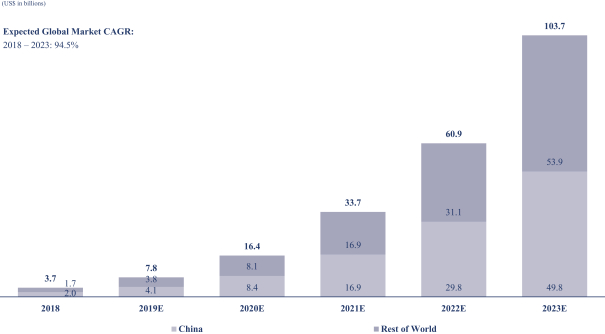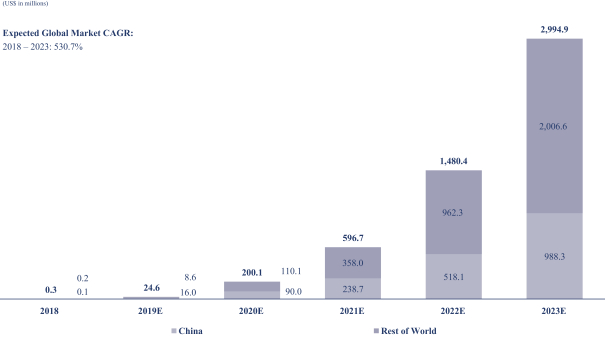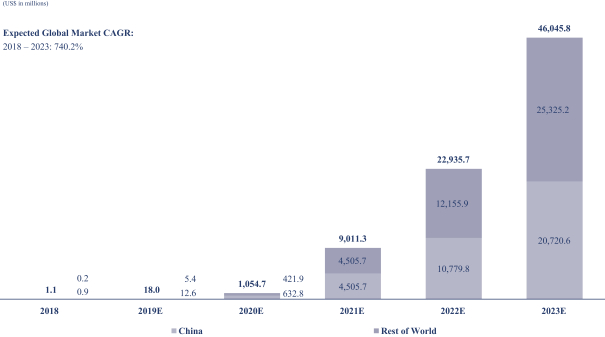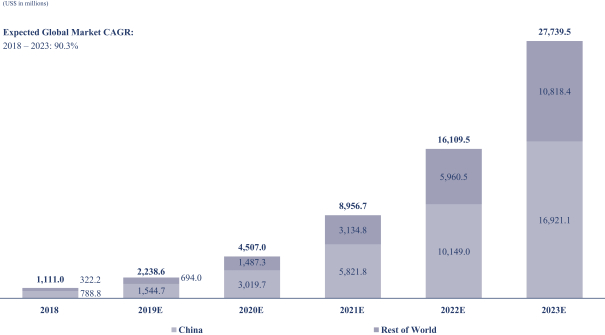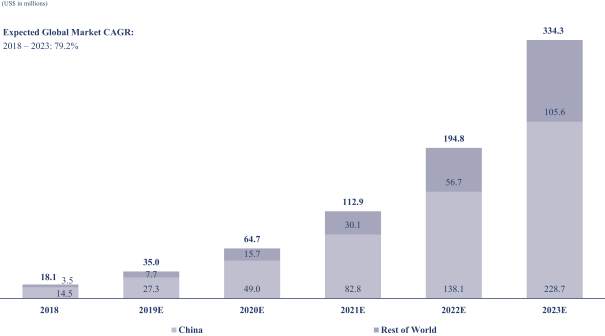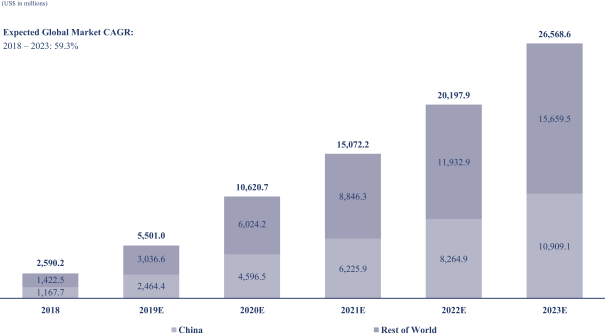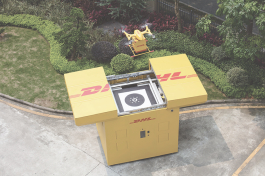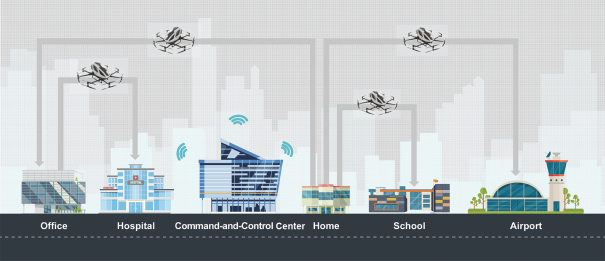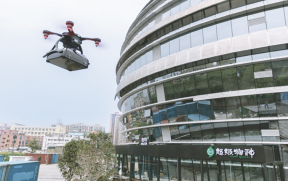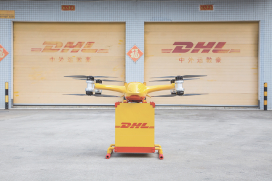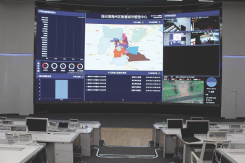Filed Pursuant to Rule 424(b)(4)
Registration No. 333-234411
3,200,000 American Depositary Shares

EHang Holdings Limited
Representing 6,400,000 Class A Ordinary Shares
This is an initial public offering of American depositary shares, or ADSs, representing Class A ordinary shares of EHang Holdings Limited.
We are offering 3,200,000 ADSs. Each ADS represents two Class A ordinary shares, par value US$0.0001 per share.
Prior to this offering, there has been no public market for the ADSs or our shares. The ADSs have been approved for listing on the Nasdaq Global Market, under the symbol “EH.”
Upon the completion of this offering, our issued and outstanding share capital will consist of Class A ordinary shares and Class B ordinary shares. Our founder, Mr. Huazhi Hu, who is also our director and chief executive officer, will beneficially own all of our then issued and outstanding Class B ordinary shares and will be able to exercise 88.2% of the total voting power of our issued and outstanding share capital immediately following the completion of this offering assuming the underwriters do not exercise their over-allotment option, or 88.1% of the total voting power of our issued and outstanding share capital immediately following the completion of this offering if the underwriters exercise their over-allotment option in full. Holders of Class A ordinary shares and Class B ordinary shares have the same rights except for voting and conversion rights. Each Class A ordinary share is entitled to one vote, and each Class B ordinary share is entitled to ten votes and is convertible into one Class A ordinary share. Class A ordinary shares are not convertible into Class B ordinary shares under any circumstances. Upon any sale, transfer, assignment or disposition of Class B ordinary shares by their holder or a change of ultimate beneficial ownership of any Class B ordinary share to any person other than our founder or an affiliate controlled by our founder, such Class B ordinary shares are automatically and immediately converted into the same number of Class A ordinary shares.
We are an “emerging growth company” under applicable U.S. federal securities laws and are eligible for reduced public company reporting requirements. Following the completion of this offering, we will be a “controlled company” as defined under the Nasdaq Stock Market Rules because our founder will beneficially own all of our issued Class B ordinary shares, representing more than 50% of our total voting power.
Investing in the ADSs involves risks. See “Risk Factors” beginning on page 16.
PRICE US$12.50 PER ADS
|
Price to |
Underwriting and |
Proceeds to us |
||||||||||
| Per ADS |
US$12.50 | US$0.875 | US$11.625 | |||||||||
| Total |
US$40,000,000 | US$2,800,000 | US$37,200,000 | |||||||||
| (1) | See “Underwriting” for a description of the compensation payable to the underwriters. |
We have granted the underwriters the right to purchase up to an additional 480,000 ADSs to cover over-allotments at the initial public offering price, less underwriting discounts and commissions.
Mr. Huazhi Hu and entities affiliated with GGV have subscribed for and been allocated by the underwriters 400,000 ADSs and 160,000 ADSs, respectively, in this offering at the initial public offering price, representing 12.5% and 5.0%, respectively, of the ADSs being offered in this offering, assuming the underwriters do not exercise their over-allotment option. Mr. Hu is our founder, director and chief executive officer and one of our principal shareholders. Entities affiliated with GGV are collectively our principal shareholders and affiliates of one of our directors. The underwriters will receive the same underwriting discounts and commissions on any ADSs purchased by these shareholders as they will on any other ADSs sold to the public in this offering.
Neither the United States Securities and Exchange Commission nor any other regulatory body has approved or disapproved of these securities, or determined if this prospectus is truthful or complete. Any representation to the contrary is a criminal offense.
The underwriters expect to deliver the ADSs against payment in U.S. dollars in New York, New York on or about December 16, 2019.
| MORGAN STANLEY |
| NEEDHAM & |
TIGER BROKERS | PRIME NUMBER CAPITAL |
December 11, 2019.
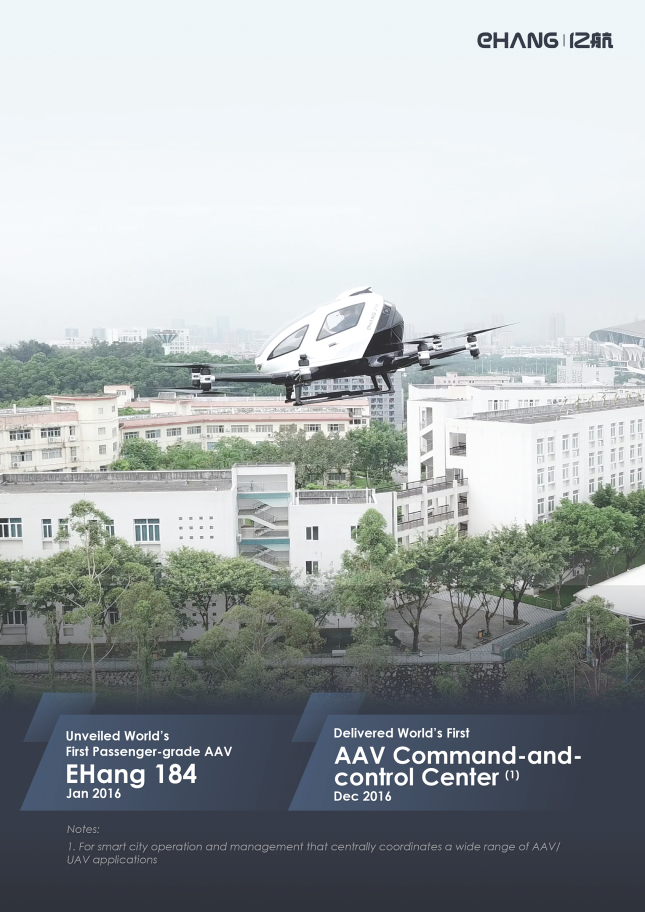





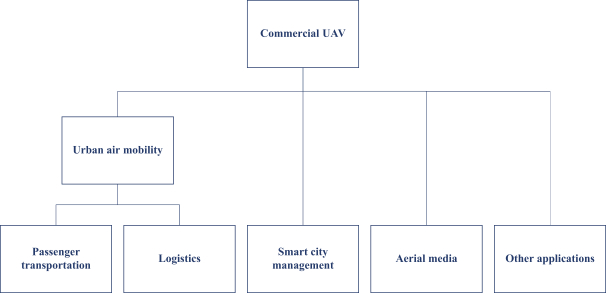
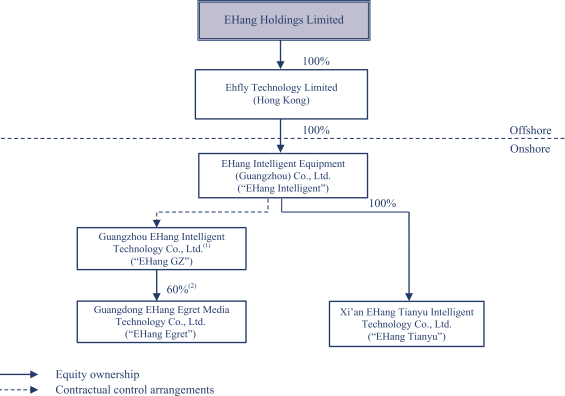
 ” (the Chinese characters for our brand, “EHang”) for vehicles and bicycles, which fall into the same class of products as remote aerial vehicles and aerospace transportation. Although we received a
favorable judgement in a proceeding relating to such precedent registrations, we may continue to face intellectual property infringement claims in the future.
” (the Chinese characters for our brand, “EHang”) for vehicles and bicycles, which fall into the same class of products as remote aerial vehicles and aerospace transportation. Although we received a
favorable judgement in a proceeding relating to such precedent registrations, we may continue to face intellectual property infringement claims in the future. 